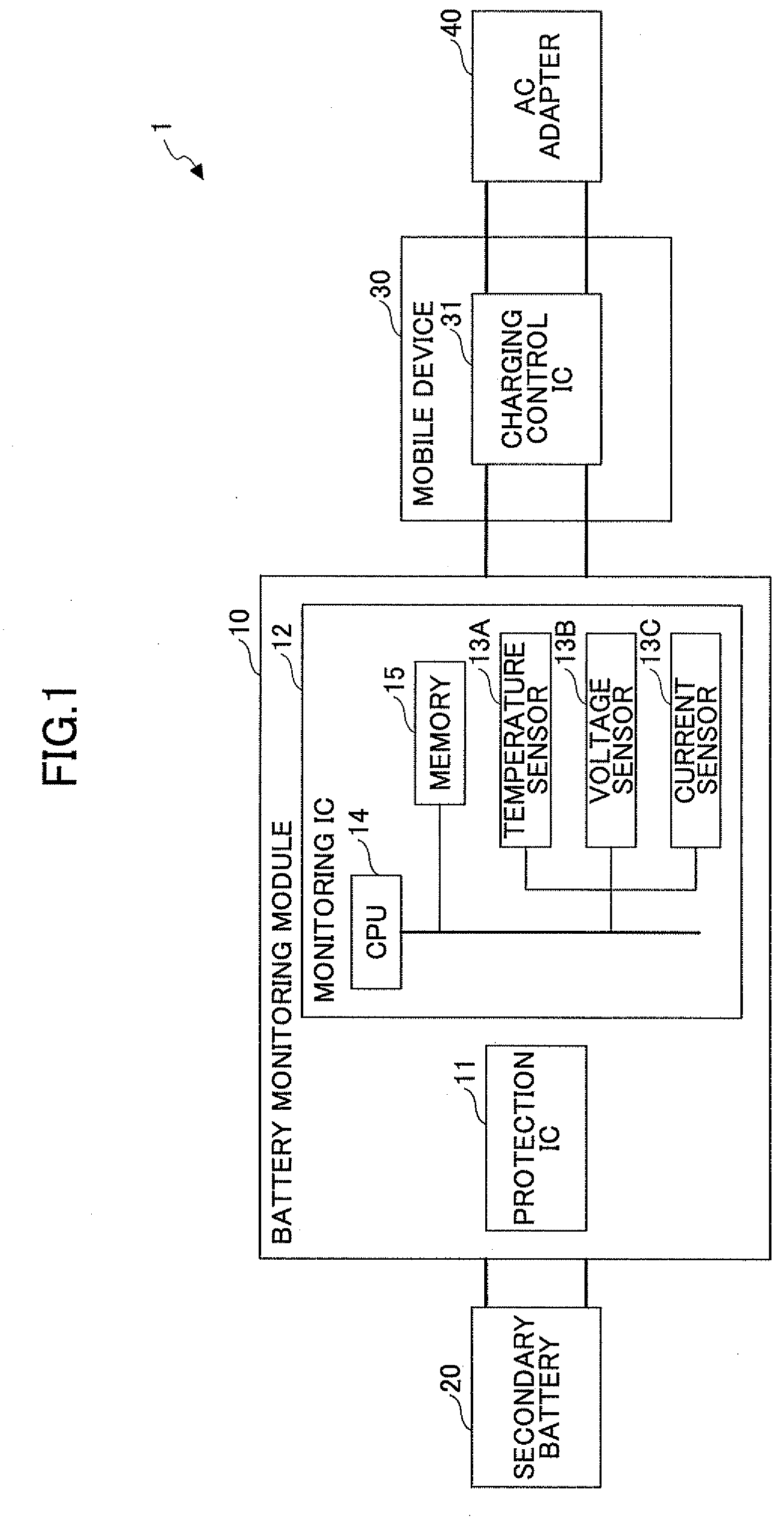Battery monitoring device and battery monitoring method
a battery monitoring and monitoring device technology, applied in circuit monitoring/indication, instruments, electrochemical generators, etc., can solve the problems of change in charging voltage, charge end current, path resistance of a detection portion, and inability to take into account the path resistance, so as to improve the accuracy of computation of fully charged time.
- Summary
- Abstract
- Description
- Claims
- Application Information
AI Technical Summary
Benefits of technology
Problems solved by technology
Method used
Image
Examples
example)
(Example)
SOCfull=−0.026×(139 mΩ+100 mΩ)+105.5+0.05×(4250 mV−4200 mV)
In the above formula, ΔVcv is the voltage which is obtained by subtracting the standard charging voltage of the secondary battery 20 from the computed constant-voltage charging voltage Vcv (ΔVcv=Vcv−standard charging voltage (e.g. 4.2V)).
[0101]The coefficients (αSOC, βSOC, αV) which indicate the characteristics of SOCfull shown in FIG. 7 are stored in the recording unit 52 as the characteristic data.
[0102]When the charging current value Ic>0 is detected by the detecting unit 51, the charging time computing unit 55 determines that the processing state is in the charging state, and computes the first charging ratio SOCfull in accordance with the above formula (1) by using the voltage increment ΔVcv, the internal resistance value Rrtn at the present temperature, and the path resistance Rc (computed beforehand).
[0103]The internal resistance value Rrtn at the present temperature may be computed based the ambient temperat...
PUM
 Login to View More
Login to View More Abstract
Description
Claims
Application Information
 Login to View More
Login to View More - R&D
- Intellectual Property
- Life Sciences
- Materials
- Tech Scout
- Unparalleled Data Quality
- Higher Quality Content
- 60% Fewer Hallucinations
Browse by: Latest US Patents, China's latest patents, Technical Efficacy Thesaurus, Application Domain, Technology Topic, Popular Technical Reports.
© 2025 PatSnap. All rights reserved.Legal|Privacy policy|Modern Slavery Act Transparency Statement|Sitemap|About US| Contact US: help@patsnap.com



